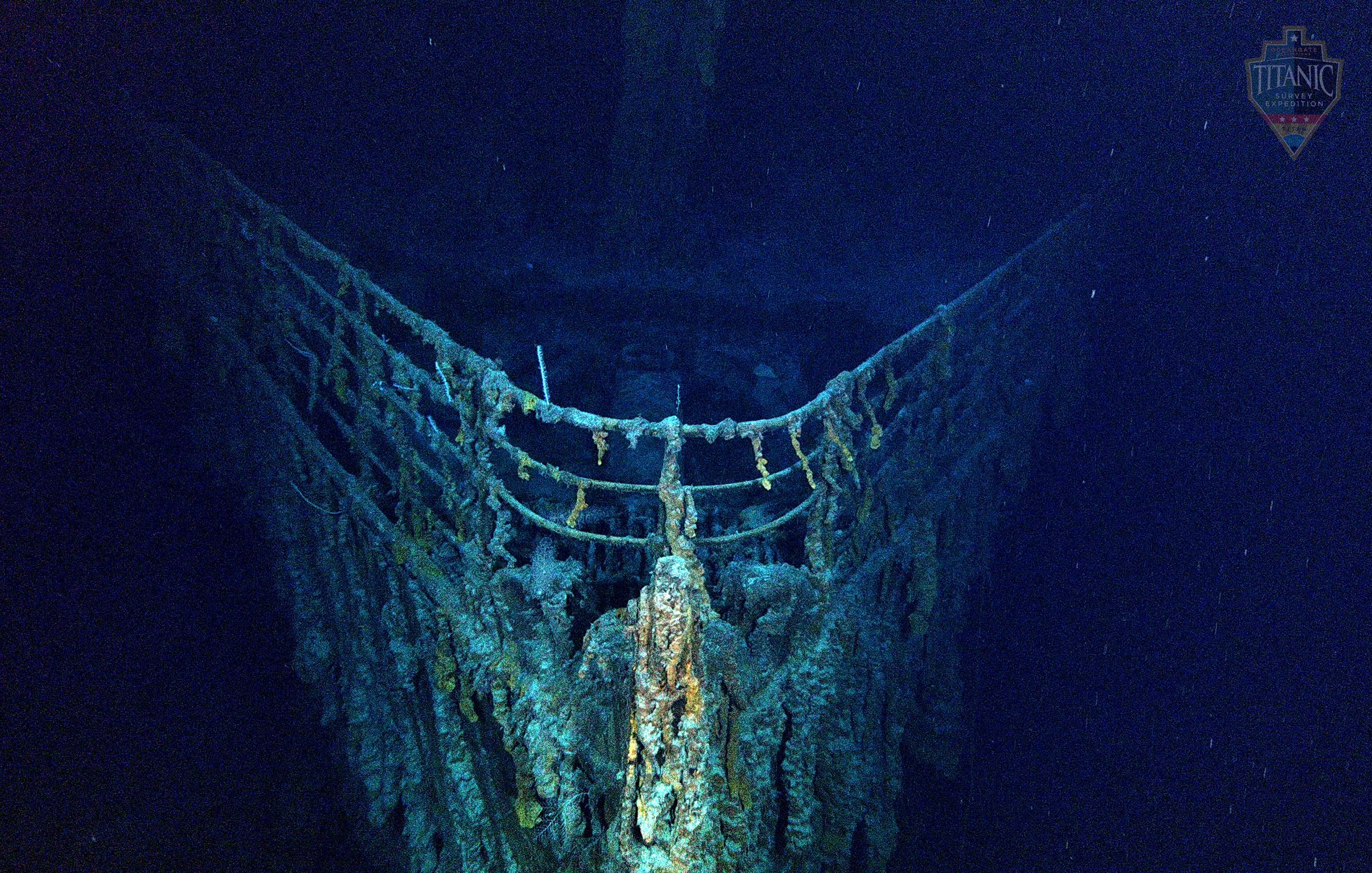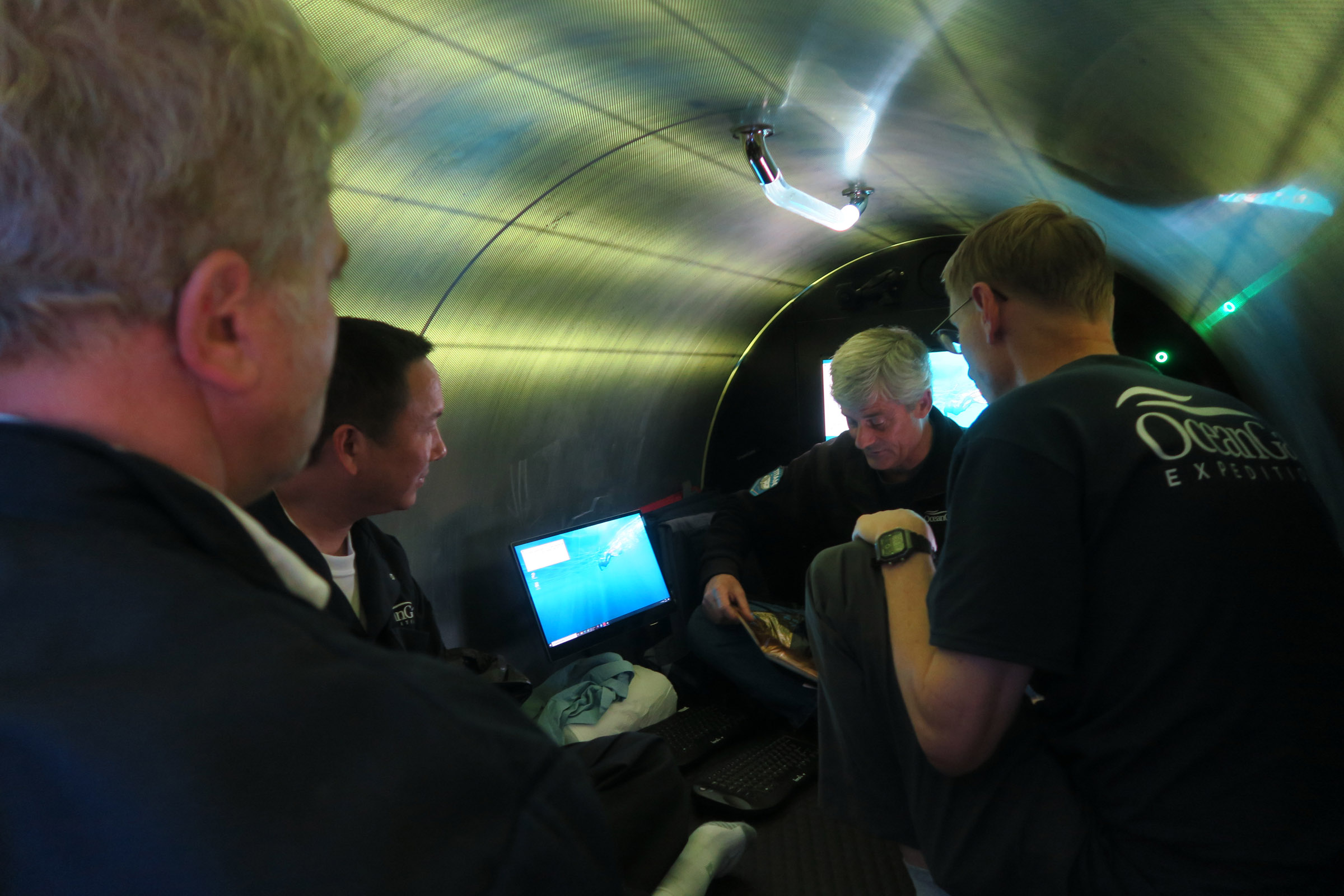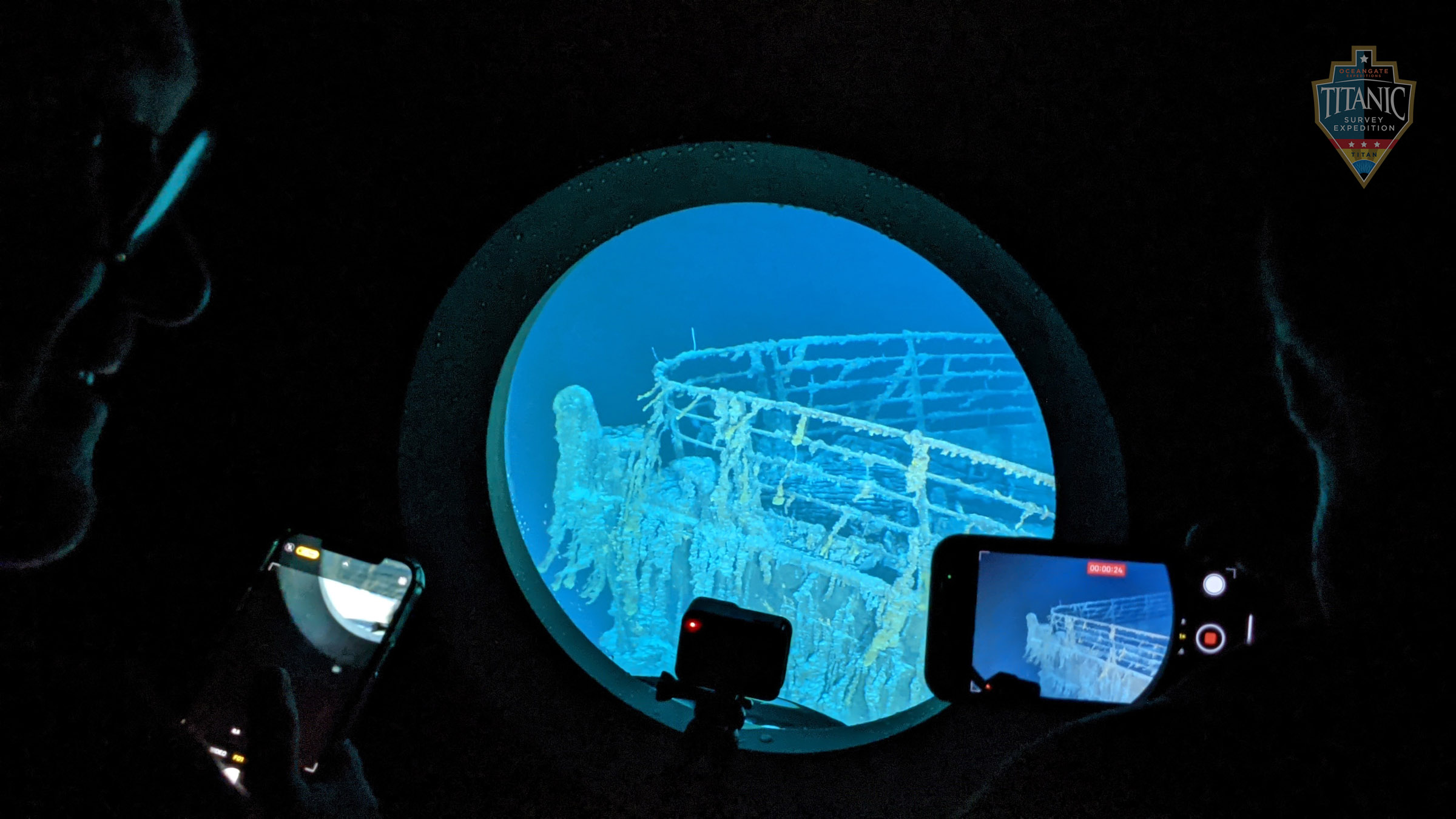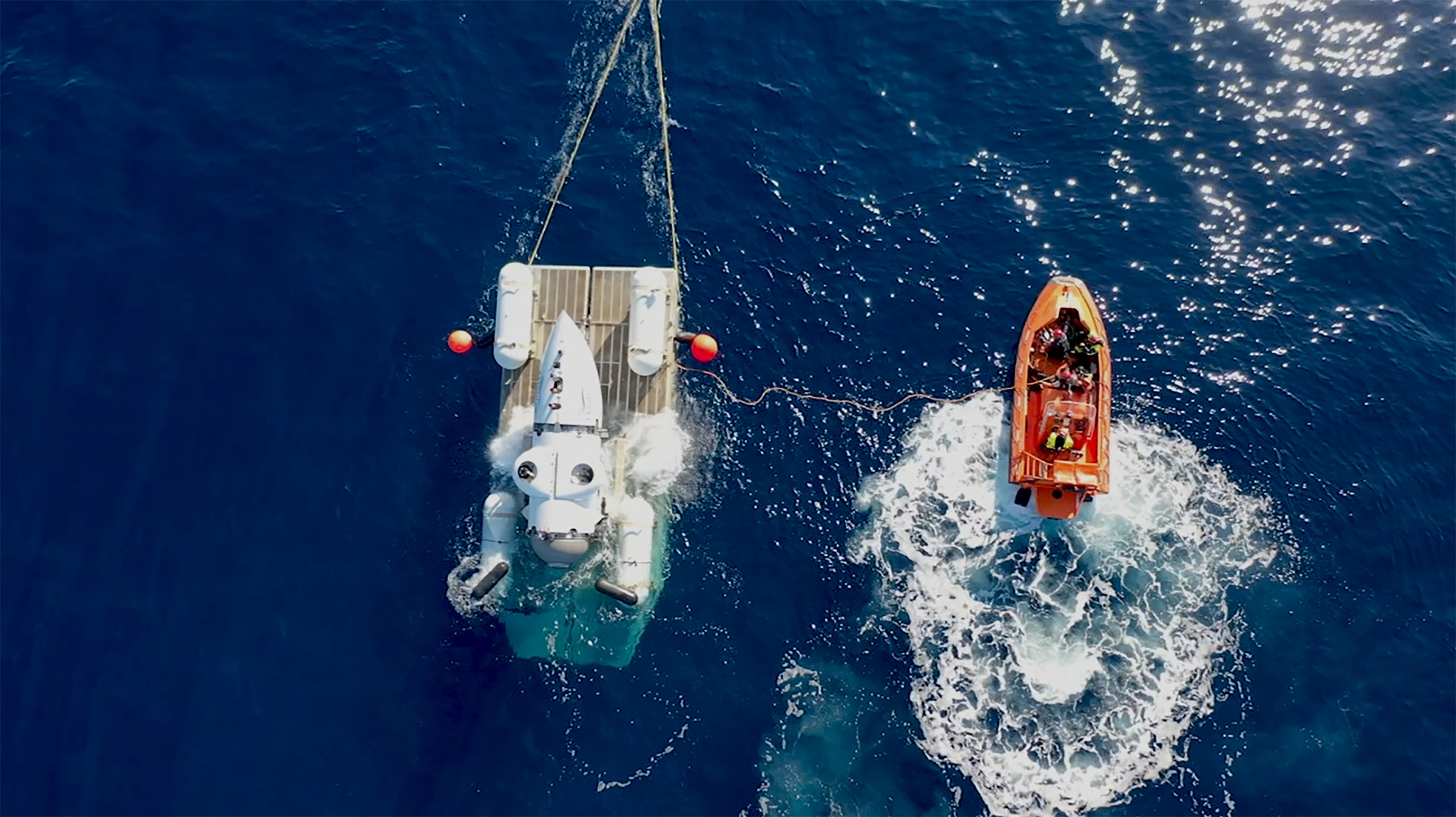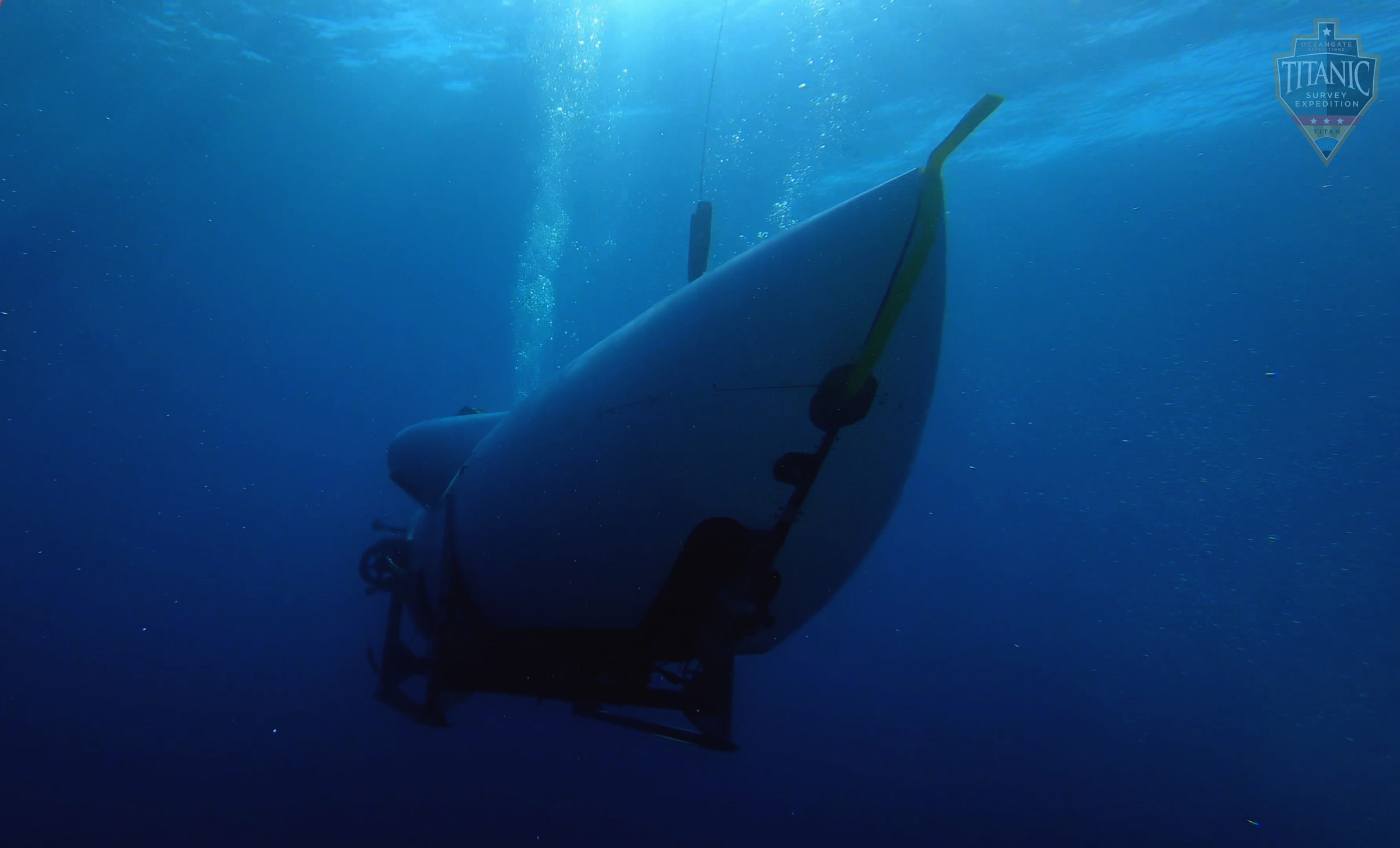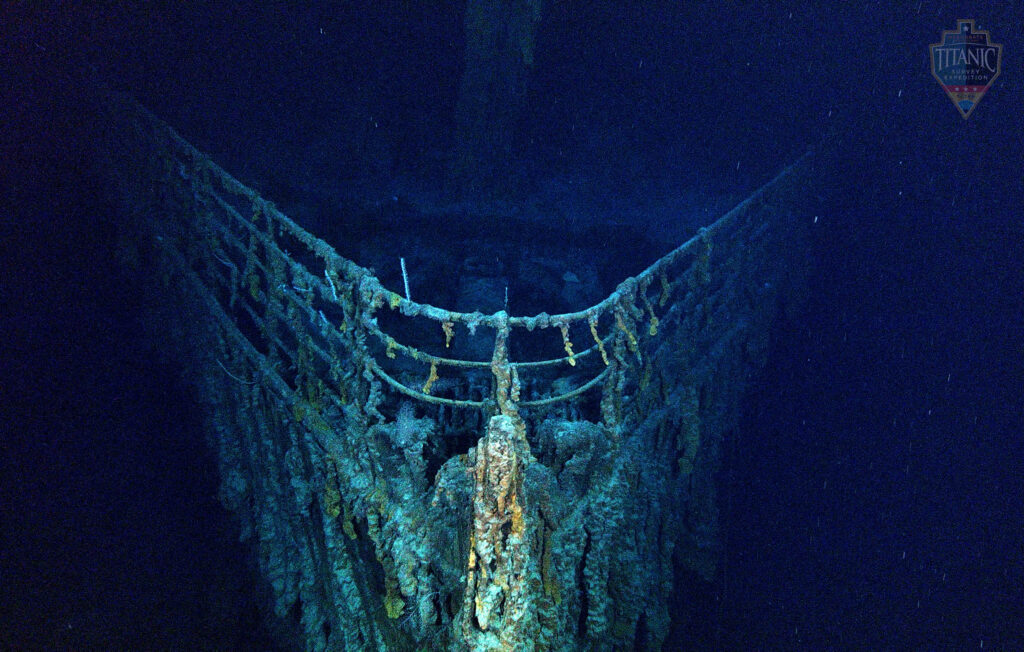
When Stockton Rush, CEO and founder of Everett-based OceanGate Inc. first discovered deep sea scuba diving almost 20 years ago, he was immediately taken by the amazing topography, astounding creatures, and awe-inspiring wreckage found hiding under the ocean surface. You could say that Rush was already born with a spirit for adventure—he once aspired to be an astronaut and at age 19 was considered the youngest jet transport rated pilot in the world—but it only took a few dives for the mysteries of the briny deep to pivot his attention from the skies to the seas.
“I had thought space was my calling, but what I realized was that I really wanted to be an explorer, to discover new things, find new life forms, to see things another human being hasn’t ever seen before,” he says. “And the oceans really are the last uncharted frontier. There is still so much to be discovered.”
But, as much as Rush loved diving, he was less enthused by the cumbersome gear that came with it, not to mention the challenging conditions posed by the cold Pacific Northwest waters and the isolation he felt underwater from other divers. He went looking for a small submarine or submersible he could rent out for his dives instead, but quickly hit a dead end. This prompted him to purchase an unfinished hull from California and retrofit it to his needs.
That prototype took its first dive in Desolation Sound, and soon, Rush began to see a vision for the future: “Diving in a sub is so different, there is a team aspect to it; that’s when I start thinking of how to get more people underwater to experience the ocean for themselves.”
OceanGate Inc. was thus founded in 2009, with Rush working over the years to create a business platform and the compatible submersibles and support systems that would open up oceanic exploration not only to more researchers and scientists, but also to passionate individuals from all walks of life.
Fast-forward to 2021 when Rush did just that. Last summer, OceanGate Inc. along with its sister organizations—OceanGate Expeditions and nonprofit arm OceanGate Foundation—made headlines around the world after releasing images from their expedition to the wreck site of none other than RMS Titanic, the first in a multi-year longitudinal study.
“The wreck itself is so colorful. The metal rusticles are a vivid red, and there are the greens and blues that have come from the copper and brass elements on the ship,” recalls Rush of his first impression at viewing the sight. “It’s a palate of beautiful colors—it’s like looking at abstract art.”
Brought to life in stunning 4K resolution, the captivating imagery was all taken from aboard Titan, the primary research vessel for the 2021 Expedition and the world’s only five-person manned submersible capable of reaching a depth of 4,000 meters. (This benchmark means that Titan could reach to the depths of almost 90 percent of the world’s oceans; as the Titanic rests at 3,800 meters it is believed Titan is the only manned submersible that can currently dive to this depth.) In addition to having the largest viewport of any deep diving submersible, Titan’s exterior cameras and lighting provide a vivid live view of the outside environment, perhaps an everyday concept on land, but an innovative one in a 22-foot-long submersible sleuthing out the seas.
She’s also agile and nimble. Submarines are often fabricated from titanium, which is strong but also heavy. Instead, Titan’spressure vessel is crafted from a lighter aerospace-grade carbon fiber that has her weighing in at just over 10,000 pounds. Thus, Titan is light enough to be transported via a standard tractor trailer, and can be launched from a variety of vessels. Rush says in a pinch, he has even launched the submersible from a kayak equipped with a scuba tank. “Her versatility means that we can match our support ships to the needs of the specific mission and not be curtailed by the needs of the sub,” he explains, an important note considering that OceanGate’s plans for exploration reach much further than Titanic. Current upcoming expeditions include one to survey the depths of the massive underwater Hudson Canyon off the coast of New York and another to observe flora, fauna, and marine life in the Great Bahama Bank.
After the successful completion of the 2021 Titanic Expedition, Titan was trucked back across the country back to the Puget Sound—an example of how even if it has made a name for itself lately in the Northeastern Atlantic, the company is still very much anchored in the Pacific Northwest.
All of OceanGate Inc.’s submersibles—there are currently four including Titan—are developed out of the company’s homebase at the Port of Everett, with testing and research dives often taking place in nearby Possession Sound. Local partnerships abound: OceanGate collaborated with NASA on some of the technical aspects of Titan, but they also leaned on the experts at Boeing and the University of Washington Applied Physics Lab during fabrication. Toray in Tacoma produced the carbon fiber composite material for the submersible, Janicki Industries out of Sedro-Wooley did all the machining work, and then the UW stepped up again to help OceanGate test the pressure vessel at their School of Oceanography. “It’s really unique to have all these companies and resources available to us here locally,” says Rush. “It’s been a great community to work with.”
Over the winter and early spring months, the OceanGate crew has been busy prepping Titan for the sophomore Expedition that kicks off June 15th. Taking lessons from the inaugural exploration—Rush only semi-jokingly says he learned to pack warmer clothes this time—Titan has received a bevy of upgrades, including a number of improvements to the electrical and weight deployment systems. Her cameras also have been upgraded to now capture imagery in 8K resolution.
The submersible will also play a vital role in a new research initiative unique to this year’s missions: the collection of environmental DNA.
As of April 12 of this year, RMS Titanic has sat on the ocean floor for 110 years and in that time the wreckage has become home to a vast variety of marine life, creating an artificial reef-like sanctuary for these cold water organisms. “The creatures down there are frankly some of the weirdest, craziest, and coolest things I’ve ever seen,” says Rush when describing in great detail a ghostly white, crustacean-like life form he observed last year. OceanGate’s Lisa Dreher adds it is quite possible that there are additional species lurking nearby that haven’t even been observed yet, but have left DNA behind. Led by researcher Dr. Steve W. Ross, the marine biology team will deploy Niskin bottles in the water column at various prescribed depths during descension over the course of several missions. Attached to a cable, these plastic cylinder tubes are equipped with stoppers on each end held open by plastic cords attached to a release mechanism. When a small weight is released down the cable line, it strikes the release mechanism, stopping up the bottle, and trapping water inside non-invasively. Also relying on the high-resolution imagery and footage captured to provide additional context to the study, the team will then use the collectyed genetic information to develop a catalog of marine life.
Coming about to Rush’s original objective all those years ago, the team that will make the 2022 Expedition consists of the aforementioned researchers, marine biologists, archaeologists, historians, and perhaps most uniquely—trained citizen explorers. Unlike the current wave of space tourism, these Mission Specialists are not just along for the ride, but are active participants in both subsea and topside support roles. This can include everything from dive planning and working side-by-side with researchers to capturing video footage, sonar, laser scans, and 3D imagery to running communications and assisting with dive preparations and more—a full “submersive” experience, if you will, into the world of exploration.
One such Mission Specialist is Gary Philbrick, a Seattle native and current Sun Valley, Idaho, resident who is stepping back on board after serving with the 2021 Expedition team. “I’ve always had a lifelong desire and passion to find out what’s in the ocean, even as a kid in Seattle playing and diving around in the Sound,” says Philbrick. “And it’s absolutely riveting, to say watch a rattail fish in the water column as you descend down at 12,000 feet.” An avid traveler, diver, and outdoor enthusiast, Philbrick primarily helmed the inflatable that helped launch the specialists going down in 2021, and states his biggest takeaway was not the behemoth lying on the ocean floor, but rather the camaraderie built among the team.
“Seeing Titanic was icing on the cake, but I’d say 90 percent of what really made the experience for me were the interactions and conversations on the ship,” he explains. “Getting to experience first-hand the knowledge and wisdom of the specialists, some of whom even helped bring artifacts up from the wreckage, to learn their insights about the ocean over a cup of coffee, that was far and away the best part.”
“It’s really a chance to get your hands dirty, be a kid, find out what it is to be an explorer,” echoes Rush. “People come on board with different perspectives, skills, aspirations, and imaginations, and then you layer in the experts from the field, and it creates this dynamic team—and sets up an amazing environment to embark on an expedition.”
>> To learn more about the 2022 Titanic Expedition taking place now, plus details on other upcoming expeditions, visit: oceangateexpeditions.com.
